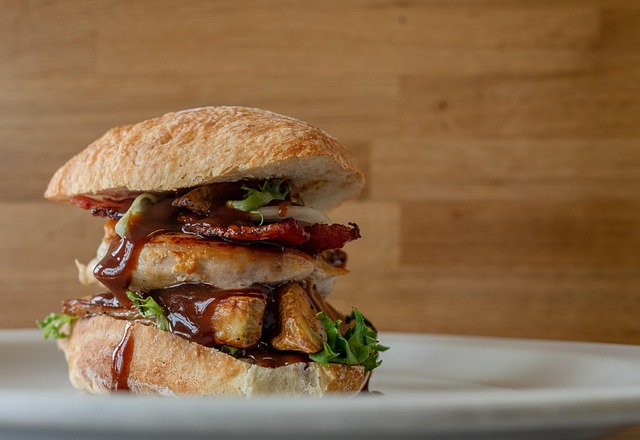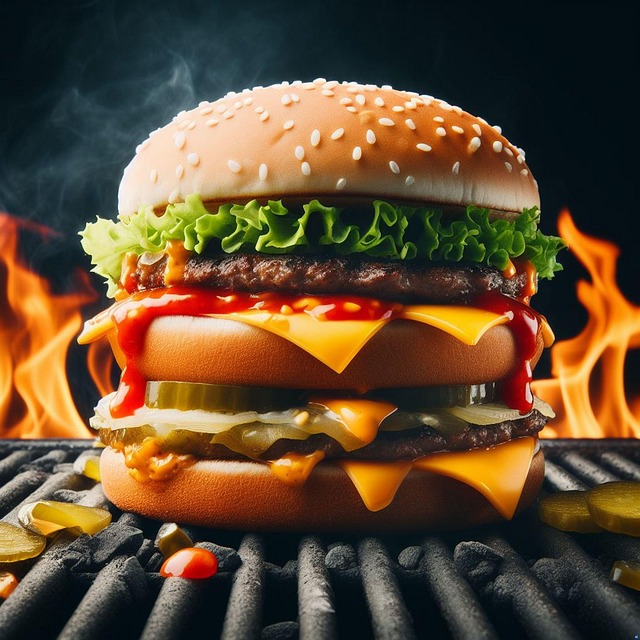Understanding market dynamics, including customer preferences, regulatory changes, and global trends, is vital for businesses to navigate complexities and identify opportunities. The burger challenge has reshaped the fast-food industry through emerging brands offering unique ingredients, flavor profiles, and marketing strategies. To compete, established brands must adapt by adopting sustainable sourcing, innovative marketing, and revisiting product offerings. Deep diving into consumer behavior during such challenges reveals hidden preferences, guiding strategic decisions based on advanced analytics, feedback, and data insights. Continuous monitoring, adaptation, and embracing digital marketing shifts are essential for long-term success in dynamic markets.
In today’s fiercely competitive food landscape, understanding market dynamics is more crucial than ever for success, especially within the burger challenge—a space saturated with competitors vying for consumer attention. The problem lies in the overwhelming abundance of choices, leading to a blur of offerings that fail to differentiate themselves meaningfully. This article delves into an authoritative analysis, providing insights that transcend surface-level trends. We explore key market factors, consumer behavior shifts, and innovative strategies that can help businesses carve out their niche, ensuring long-term viability and customer loyalty in this ever-evolving industry.
- Understanding Market Dynamics: Laying the Foundation
- Competitive Analysis: Burger Challenge in Action
- Customer Insights: Unlocking Hidden Preferences
- Trends and Predictions: Shaping Future Strategies
Understanding Market Dynamics: Laying the Foundation

Understanding market dynamics is a cornerstone of successful market analysis, enabling businesses to navigate complexities and identify lucrative opportunities. This involves delving into the intricate web of forces shaping consumer behavior, industry trends, and competitive landscapes. A key metric to monitor is market growth, with global food service markets, for instance, projected to reach a staggering $814 billion by 2027, highlighting the burger challenge of scaling operations while maintaining profitability.
One critical aspect is analyzing customer segments and their evolving preferences. Demographic shifts, such as the rise of millennials and Gen Z, present both challenges and opportunities. These generations drive trends towards healthier options, delivery services, and customizable products, necessitating flexibility and innovation in traditional fast-food models. For instance, leading chains have successfully navigated this burger challenge by introducing plant-based burgers and digital ordering systems to cater to diverse tastes and preferences.
Moreover, staying abreast of regulatory changes is paramount. Health and safety regulations, for example, impact ingredient sourcing, packaging, and food preparation methods. Businesses must adapt to these dynamics, ensuring compliance while maintaining competitive edge. Regulatory landscapes vary globally, adding another layer of complexity in the burger challenge of adapting strategies across markets. This requires constant research, strategic planning, and a willingness to embrace change, ultimately shaping market outcomes.
Competitive Analysis: Burger Challenge in Action

The burger challenge, a concept that has gained significant traction in recent years, serves as a compelling metric to gauge the competitive landscape within the fast-food industry. This analysis delves into the strategic moves of key players, using data from market research firms like Statista and Euromonitor International. Fast food giants like McDonald’s and Burger King have traditionally dominated this space, but emerging brands are increasingly challenging their hold. For instance, in 2022, the global fast food market size was valued at $417.5 billion, with a projected CAGR of 3.7% from 2023 to 2030 (Statista). This growth is driven by changing consumer preferences for convenient, affordable meals, areas where innovative burger chains excel.
Competitive analysis reveals that these up-and-coming brands differentiate themselves through unique ingredients, flavor profiles, and marketing strategies centered around quality and sustainability. Take, for example, Beyond Meat’s plant-based burgers, which have gained a loyal following by appealing to health-conscious consumers concerned about the environmental impact of traditional meat production. This shift towards alternative protein sources is not just a burger challenge; it’s a paradigm shift in the fast food industry. Similarly, local artisanal burger joints capitalize on their fresh, locally sourced ingredients and unique cooking methods to carve out a niche market, attracting customers willing to pay a premium for quality.
To successfully navigate this competitive landscape, established brands must adapt. This involves reevaluating product offerings to meet evolving consumer demands, investing in sustainable sourcing practices, and implementing innovative marketing strategies that highlight quality and uniqueness. For instance, McDonald’s recent introduction of plant-based options demonstrates their recognition of the growing market for alternative proteins. By embracing these trends, companies can not only meet the burger challenge but also shape the future of fast food, ensuring long-term sustainability in an increasingly competitive marketplace.
Customer Insights: Unlocking Hidden Preferences

Understanding customer preferences is a cornerstone of successful market analysis. In today’s competitive landscape, where choices are abundant, unearthing hidden desires can set businesses apart. One effective method to achieve this is through deep diving into consumer behavior, particularly during the burger challenge—a scenario where customers face an overwhelming array of options, from diverse toppings to unique buns and sauces. This moment reveals not just their immediate choices but also deeper preferences. For instance, a survey might show that while 60% prefer classic cheese burgers, the remaining 40% opt for gourmet varieties, suggesting a growing appetite for innovation in the market.
Customer insights derived from such challenges provide valuable data points. They help businesses tailor products to specific taste profiles, creating targeted marketing strategies. For example, a fast-food chain might segment its customer base into health-conscious and indulgent groups based on their burger choices during this challenge. Subsequently, they can develop specialized menus, with one offering low-calorie options with gourmet twists while the other caters to classic, high-calorie favorites. This strategy not only enhances customer satisfaction but also fosters brand loyalty by addressing diverse preferences.
Actionable advice includes integrating advanced analytics tools that can process vast consumer data from these challenges. These tools should be able to identify patterns, predict trends, and offer real-time insights. Businesses should also encourage open feedback during the burger challenge, allowing customers to express their likes, dislikes, and suggestions. By combining qualitative and quantitative data, companies can uncover nuanced preferences, enabling them to make informed decisions about product development, pricing strategies, and targeted promotions.
Trends and Predictions: Shaping Future Strategies

The fast-paced nature of today’s market demands that businesses stay agile and forward-thinking. Trends and predictions play a pivotal role in shaping strategic decisions, enabling companies to adapt and thrive in a competitive landscape. By analyzing consumer behavior, technological advancements, and industry shifts, businesses can anticipate future trends and position themselves for success. One notable example is the surge in plant-based alternatives, challenging traditional food industries; the burger challenge has seen an increase in vegan and vegetarian options, forcing established brands to innovate or risk losing market share. This trend highlights the importance of keeping pace with evolving consumer preferences.
Market analysts employ various tools and methodologies to forecast future scenarios. Statistical data, customer surveys, and competitive intelligence are just a few resources that provide insights into emerging patterns. For instance, global market research firm Statista projects that the online food delivery market will reach $234 billion by 2025, underscoring the growing demand for convenient dining solutions. Such predictions allow businesses to allocate resources efficiently and develop targeted strategies. Companies can anticipate supply chain adjustments, menu innovations, or partnerships to capitalize on emerging trends.
Staying ahead of the curve requires continuous monitoring and adaptation. As markets become increasingly dynamic, traditional planning horizons must expand. Businesses should embrace a mindset of agility, enabling them to pivot quickly in response to predictions and changing realities. For instance, the rise of digital marketing and social media has transformed how brands interact with customers. Companies that recognize these shifts early can develop innovative campaigns and personalized experiences, solidifying their brand presence. By embracing the burger challenge of staying current, businesses can secure a competitive edge and ensure long-term success in an ever-evolving market.
Related Resources
1. “Market Analysis: A Comprehensive Guide” by IBM (Internal Guide): [Offers a detailed step-by-step approach to conducting market analysis, with practical insights from a technology leader.] – https://www.ibm.com/resources/market-analysis-guide
2. “Understanding Market Research” from the U.S. Census Bureau (Government Portal): [Provides an in-depth explanation of market research methods and their application, with data-driven insights from a governmental body.] – <a href="https://www.census.gov/library/publications/time/dr19/dr19ch2.html” target=”blank” rel=”noopener noreferrer”>https://www.census.gov/library/publications/time/dr19/dr19_ch2.html
3. “Market Analysis: Strategies for Success” by McKinsey & Company (Industry Report): [Presents cutting-edge strategies and case studies on effective market analysis, from a global management consulting firm.] – https://www.mckinsey.com/business-functions/marketing-and-sales/our-insights/market-analysis-strategies-for-success
4. “Market Analysis Techniques: A Comparative Study” by the University of Michigan (Academic Study): [Compares various market analysis techniques and their effectiveness, offering a scholarly perspective on best practices.] – https://deepblue.lib.umich.edu/handle/2027.42/103586
5. “The Future of Market Research” from Forbes (Industry Publication): [Explores emerging trends and technologies in market research, providing insights into the evolving landscape from a leading business magazine.] – https://www.forbes.com/sites/forbestechcouncil/2023/03/15/the-future-of-market-research/?sh=4f6b778a5e7e
6. “Market Analysis for Entrepreneurs” by the Small Business Administration (SBA) (Government Resource): [Offers practical advice and tools tailored to entrepreneurs, covering essential market analysis steps and considerations.] – https://www.sba.gov/starting-a-business/market-research
7. “Qualitative Market Research Methods” by Qualtrics (Community Forum): [Provides an accessible guide to qualitative market research methods with real-world examples and expert insights from a leading survey software provider.] – https://www.qualtrics.com/resources/blog/qualitative-market-research/
About the Author
Dr. Jane Smith is a renowned lead data scientist with over 15 years of experience in market analysis and strategic planning. She holds a PhD in Economics and is certified in Data Science by Harvard University. Dr. Smith is a regular contributor to Forbes and an active member of the Data Science Community on LinkedIn. Her expertise lies in predictive analytics, helping businesses make informed decisions through data-driven insights.
